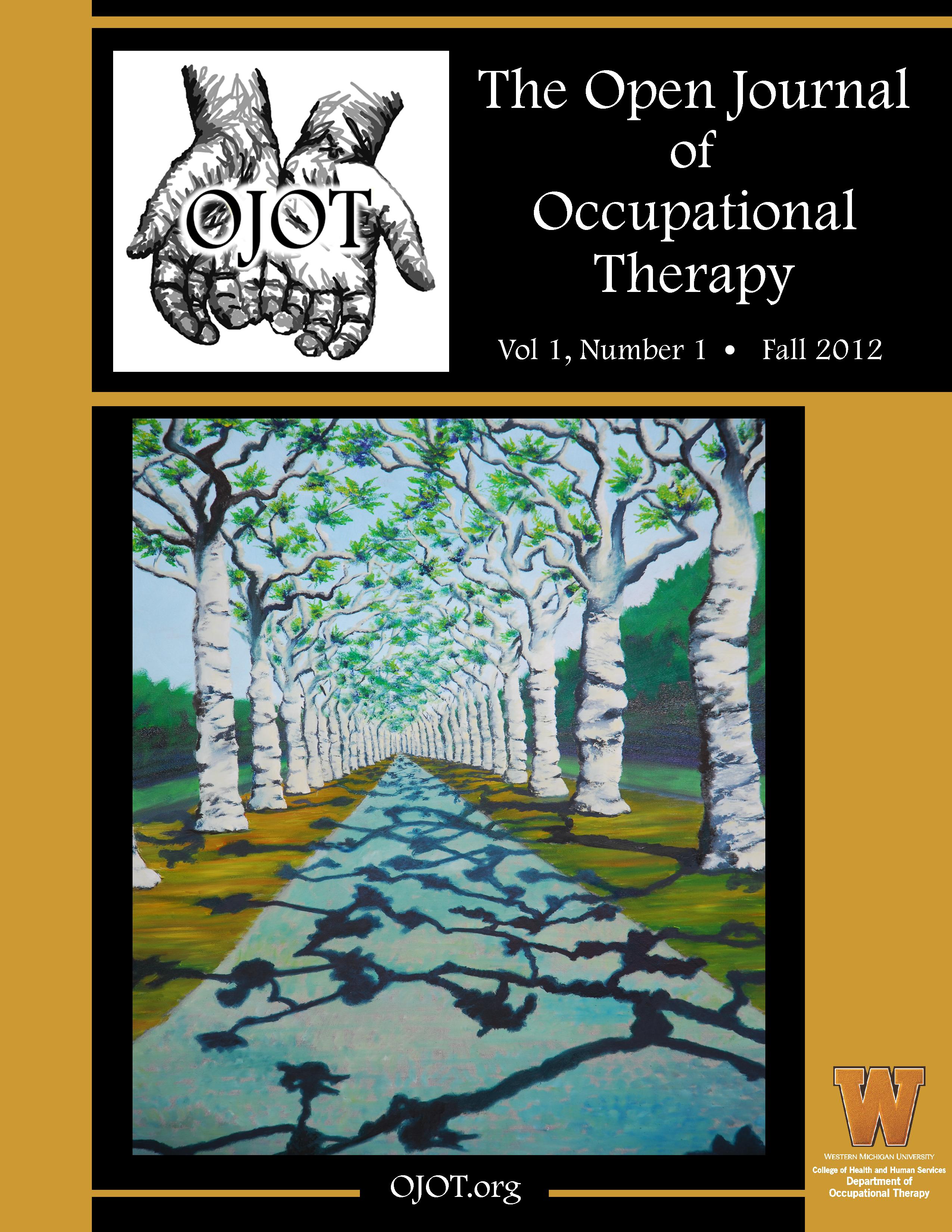ScholarWorks > HHS > OT > OJOT > Vol. 9 > Iss. 1 (2021)
Credentials Display
Karen McCarthy, OTD, OTR/L; Megan Chamberlain, OTS; Megan Chinn, OTS; Jennifer Pineda, OTS; Camille Santiago, OTS; Jamie Spitzer, OTS; Patricia Tran, OTS
Abstract
Background: College students with invisible disabilities, including chronic pain, often experience difficulty engaging in social occupations, both on and off campus, because of stigma, misconceptions, or social exclusion. Previous research has examined the use of academic accommodations to address these concerns or focused on the physical barriers to participation, failing to address the psychosocial and holistic impact of pain. Chronic pain can affect a variety of occupations, including social participation, which is a significant occupation for college students. This research explores the lived experience of chronic pain for college students and the impact of pain on social participation from an occupational perspective.
Method: To fully understand the impact that chronic pain has on social engagement, the researchers employed a qualitative phenomenological approach using semi-structured interviews to explore the lived experiences of 15 college students with chronic pain.
Results: Four main themes were identified: personality and chronic pain, stigma, the “domino effect,” and self-awareness. College students with chronic pain were able to push through the pain using coping strategies, pain management, and adaptations to promote social engagement.
Conclusion: By understanding the lived experiences of college students with chronic pain, occupational therapists can engage in an open dialogue with clients about the holistic nature of their pain and collaborate with them to create strategies to curtail occupational injustice and promote engagement in meaningful social occupation.
Recommended Citation
McCarthy, K., Chamberlain, M., Chinn, M., Pineda, J., Santiago, C., Spitzer, J., & Tran, P. (2021). Social Participation in College Students with Chronic Pain. The Open Journal of Occupational Therapy, 9(1), 1-12. https://doi.org/10.15453/2168-6408.1711
Included in
Disability and Equity in Education Commons, Higher Education Administration Commons, Occupational Therapy Commons



Comments
The authors report no potential conflicts of interest.